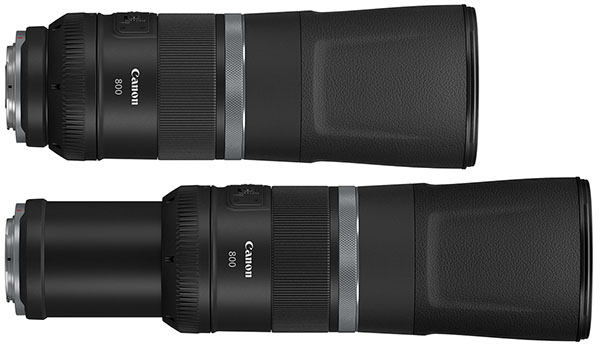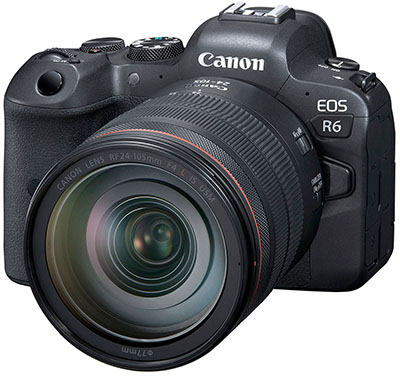Canon RF 100-500mm, 600mm and 800mm telephoto lenses is coming as early as July 2020!
Is this going to be a game changer for Canon Birders. I cannot wait for its review. Hope Canon can do a Demo outing for Malaysian Birders to test the system.
The affordability & portability is name of the birding game. So at a low price of RM4,000 for any of them and the weight - no more than 1.5 kg is fantastic news. Somemore there is OIS stabilisation which complement the IBIS (whopping 8 stops beating Oly) of their new EVF mirrorless full frame EOS R5 /R6 cameras. However you need to budget RM13,000 for the R5's 45megapixel body.
Question is 1. How good is its AF in lowlight shooting? 2. How is the DOF at the fixed F11 aperture? 3. And of course the sharpness. If its good I will be eyeing the RF 800mm. We will wait and see...........
Canon RF 800mm F11 IS STM - Overview (From Canon lens literature)
The RF 800mm IS STM lens is a super telephoto prime lens with 4-stop image stabilisation and a greater reach than its sister lens, the RF 600mm IS STM. It is perfect for the wildlife enthusiast, and ideal for specialist pursuits such as bird and aviation photography. Lightweight, powerful and compact with excellent image stabilisation for handheld shooting, the Diffractive Optic (DO) design, along with the RF lens mount and a fixed, F11 aperture, helps make it a more compact lens and easier to pack into a travel bag. Designed for Canon’s Full Frame mirrorless cameras, its RF lens mount offers a faster communication speed than a conventional DSLR. Smooth and silent focusing from the STM motor is a real advantage too, particularly for video.
Features & Benefits
- Capture safari, aircraft or travel views and shoot the ultimate frame-filling moments in glorious detail that benefit from creative telephoto compression.
- Thanks to 4-stop image stabilisation, super sharp telephoto images are possible, and you can achieve great handheld video footage too.
- Because of the RF mount, an F11 aperture and compact Diffractive Optic design, the lens measures 281.8 mm in length when stored and weighs only 1,260 g.
- An STM motor allows smooth, quiet AF while a Lens Control Ring gives intuitive control over settings. Pleasing bokeh is achieved thanks to a bladeless, F11 aperture.
- Now it’s easy to pack a super telephoto lens in your kitbag with powerful image stabilisation and AF which is available to all enthusiasts who want to travel light.
Availability and Pricing
The RF 800mm F11 IS STM is scheduled to be available at the end of July 2020 for an estimated retail price of $899.99.
*Based on CIPA (Camera & Imaging Products Association) standards. Testing performed using the EOS R camera.
Canon EOS R5 versus the new EOS R6 writeup by Jeremy Gray
Image sensor: The Canon EOS R5 features a new Canon-designed 45-megapixel full-frame image sensor. The R6, on the other hand, features a lower megapixel sensor. The 20-megapixel full-frame CMOS sensor of the R6 may not have the resolving power of the new sensor in the R5, but the R6 does have a higher native ISO ceiling: 204,800 versus 102,400.
Autofocus: Both the R5 and R6 feature Canon's latest Dual Pixel CMOS AF II. The AF system delivers 100 percent area coverage via 1,053 zones. In addition to this impressive coverage area, each camera includes eye, head and face tracking for people, dogs, cat and birds.
Performance: Despite the differences in image sensors, the R5 and R6 can both shoot at up to 12 frames per second using their mechanical shutters and 20 fps with the electronic shutter via silent photography mode. Where the R6 separates itself from the R5 in terms of performance is with respect to buffer depths. The EOS R6 can record 1,000 or more compressed raw (C-RAW) images, while the EOS R5's buffer depths top out at 260 C-RAW images when recording to either a UHS-II SD card or a CFexpress card. For regular raw images, the EOS R6 can record up to 240 images before the buffer is full, whereas the EOS R5 slows down after 180 raw images. Both cameras are powered by a DIGIC X processor.
Image stabilization: Both the EOS R5 and R6 promise up to 8 stops of image stabilization via built-in body-based image stabilization.
Design: The Canon EOS R5 and R6 are similar in overall design, but there are a few important differences. The R5 features a top LCD panel, something not included on the R6. The R6 also includes a different dial for selecting modes. The R5 uses the same mode button design as the EOS R, whereas the R6 opts for a more traditional mode dial.
Card slots: As mentioned earlier, the Canon EOS R6 has two SD card slots, both compatible with UHS-II. Rather than two SD card slots, the EOS R5 instead includes a CFexpress slot and an SD card slot (UHS-II).
Video: Thanks in part to its 45-megapixel image sensor, the EOS R5 can record 8K video at up to 30p in addition to 4K video at up to 120p. The EOS R6, on the other hand, records "just" 4K/60p video and no 8K video (there simply aren't enough pixels). Further, the EOS R6 does not record 4K video using the full width of the image sensor, something the EOS R5 can do.
Price: The EOS R6 will cost around $2,500 USD, whereas the EOS R5 will be much more expensive, launching with a suggested retail price of around $3,900.






















































